Akhnaton Retrospective: The Science of the Aton (Atom)
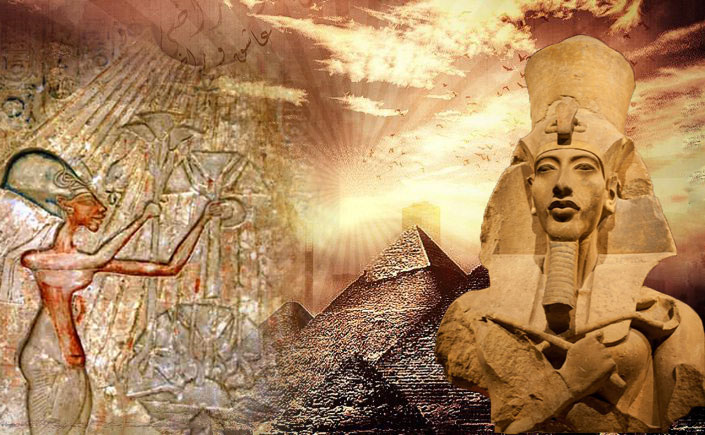 The Science of the Aton was the Science of the Atom as in the interdimensional physics presented in UN.AR.I.U.S.. This is the exact same science taught by Akhnaton but which was rejected and destroyed by the priesthood.
The Science of the Aton was the Science of the Atom as in the interdimensional physics presented in UN.AR.I.U.S.. This is the exact same science taught by Akhnaton but which was rejected and destroyed by the priesthood.
The “Sun Disc” represents the Infinite which in language of today represents the transmitter (Infinite Source) 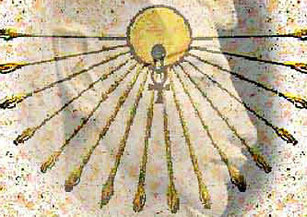 continuously transmitting everything into the Cosmos at all times. We are the receivers that are in harmony or in tune with this energy based on frequency as it is transmitting through space, time, infinity. This may represent part of the interpretation of the meaning of the sun disc.
continuously transmitting everything into the Cosmos at all times. We are the receivers that are in harmony or in tune with this energy based on frequency as it is transmitting through space, time, infinity. This may represent part of the interpretation of the meaning of the sun disc.
The Science of the Aton was therefore never a religion that promoted any kind of worship – Jesus said the same, “Worship not as the heathen does on the street corners and synagogues.” He too brought the same Science in the form of parables. This too was also in opposition of the priesthood at the time and he was crucified.
Because the Science of the Aton was in direct opposition to the priests of Amun and threatened their control, Akhnaton was murdered and his image and works were nearly chiseled away from every stone monument in Egypt or outright destroyed. His followers like those of Jesus were hunted down, brutally murdered, and their images also desecrated or destroyed.
The Science of the Atom (UN.AR.I.U.S.) which both JESUS and AKHNATON had tried to bring to the earth man, not just in those lives but other lives as well, is successful. It will be there for those minds that are ready now and a thousand years from now. It will be available even beyond that into infinity. It can never be stopped as these principles are inviolate. The priesthood had already failed even before their opposition began. The only persons they injured were themselves. For darkness can never outshine the Light.
Dr. Norman wrote the following in his later years about his lifetime as Akhnaton excerpted from 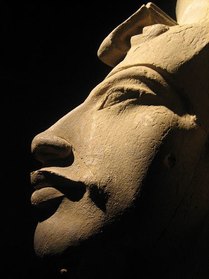 Tempus Inteludium Part III:
Tempus Inteludium Part III:
“During the lifetime of Akhnaton, if you so recall your Egyptian history, he ascended the throne at the age of 17. The young pharaoh proceeded immediately to completely reform the existing religious beliefs of that ancient land. The god-worship, the incubus, and many other god figureheads which existed in the interpretations of Egyptian beliefs were all eradicated and removed from the temple walls; the statues were overthrown and there was a vast purging of these ritualistic and false deistic worships from ancient Egypt. And in their place, there was reinstated the true cosmic interpretation of the Interdimensional Science as it is so now further compounded in the liturgies of UN.AR.I.U.S.. All of this, of course, caused great consternation and wrath among the priesthood who were forced to flee for their very lives, so it seemed, and who remained in hiding, there to gain strength and to await for an opportune time to overthrow this brash, young, Egyptian pharaoh. Their opportunity came many years later when, at the age of 37, this Akhnaton was cornered in his palace and there forced to drink a cup of prussic acid and soon afterward, passed into Spirit.
Then, of course, 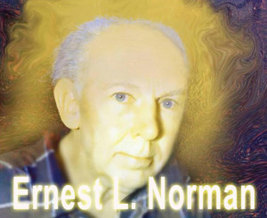 those Egyptian priests completely reinstated their false god-worship. And it was so ordained in the intervening time and in the Higher Worlds, that in my Mission here on Earth, I should “work out” physically as well as psychically, the remaining vestiges of this terrible karmic shock, which I had incurred at that time, because it had and did leave certain repercussive elements not only in the psychic anatomy, but also that it presented a certain obstacle in the future progress and evolution of my personal being…”
those Egyptian priests completely reinstated their false god-worship. And it was so ordained in the intervening time and in the Higher Worlds, that in my Mission here on Earth, I should “work out” physically as well as psychically, the remaining vestiges of this terrible karmic shock, which I had incurred at that time, because it had and did leave certain repercussive elements not only in the psychic anatomy, but also that it presented a certain obstacle in the future progress and evolution of my personal being…”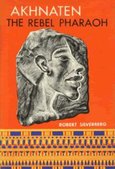
Dr. Norman continues to recount how this psychic shock was healed and in the process how he was able to, while in the hospital in a reciprocal fashion, help the doctors and nurses, who assisted him, to overcome their own psychic blocks.
What follows is an excerpt from Akhnaton: The Rebel Pharaoh by Robert Silverberg. Although Atonism is mistakenly referred to as a religion here, it gives a good account about how it was different from anything else in the world at that time:
“The townspeople run from their houses to catch a fleeting view of the great ones as their chariots flash by.
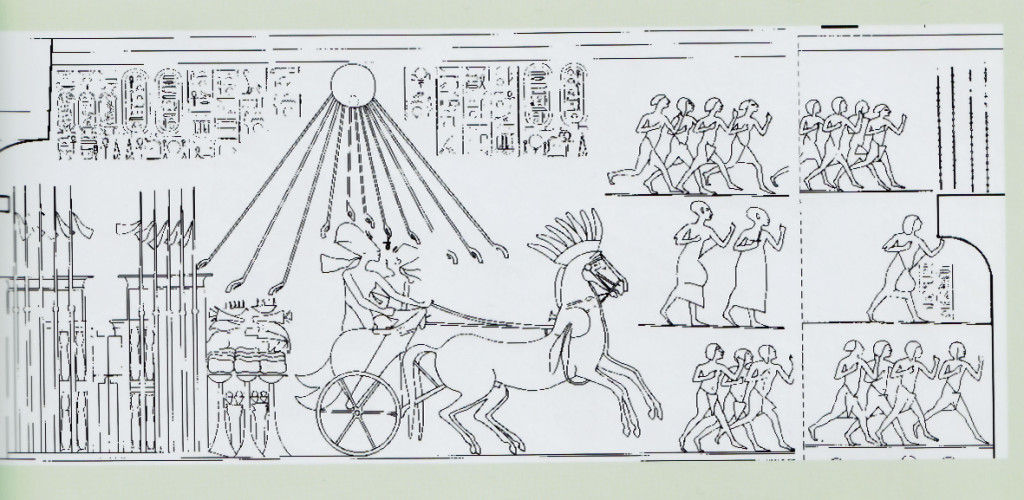 Now the royal party approaches the temple. Meryre waits by the gate to greet Pharaoh. Four slaves kneel by him, waving aloft colored fans of ostrich plumes. Fat bulls are led forth, their massive necks garlanded gaily with flowers. Girls in flowing big robes beat tambourines; trumpeters play a ringing salute to Akhnaton as he arrives.
Now the royal party approaches the temple. Meryre waits by the gate to greet Pharaoh. Four slaves kneel by him, waving aloft colored fans of ostrich plumes. Fat bulls are led forth, their massive necks garlanded gaily with flowers. Girls in flowing big robes beat tambourines; trumpeters play a ringing salute to Akhnaton as he arrives.
The king enters the building, passing through the outer gate, and coming to two huge pylons rising behind a pillared portico. Each pylon supports five towering masts from which crimson pennants fly. Between the pylons are the swinging doors of the inner gate, which are always left open to symbolize the loving way Aton welcomes worshippers.
An open court lies beyond. In it stands the high altar, under the open sky. Nothing is hidden in the worship of Aton. A flight of steps leads to the top of the altar, but Akhnaton goes by it, through a second courtyard, a third, a fourth. Here are the pillars of a colonnade, and the royal party halts a while in the cool shade. Then onward, through a fifth court and into a sixth, past another altar, and finally into the seventh courtyard, where the highest altar of all stands in Aton’s light. All is bright, open, airy here. Today, since Pharaoh is here, the temple is heaped high with flowers and bright cloth ornaments.
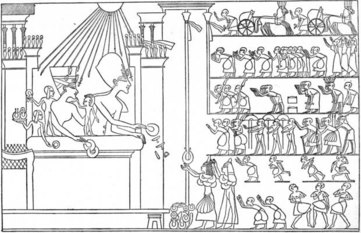 Akhnaton and Nefertiti stand at the high altar. Offerings of vegetables, fruit, flowers, geese, and joints of meat surround the royal pair. Bronze bowls filled with burning oil top the altar. Akhnaton and Nefertiti lift their right hands and scatter fragrant spices on the flames.
Akhnaton and Nefertiti stand at the high altar. Offerings of vegetables, fruit, flowers, geese, and joints of meat surround the royal pair. Bronze bowls filled with burning oil top the altar. Akhnaton and Nefertiti lift their right hands and scatter fragrant spices on the flames.
Pharaoh is bare down to the waist. All the fragility of his body is exposed: the elongated head, the flimsy neck, the hollow chest. But his skin is tanned by the sun. A skirt of fine linen covers the lower part of his body.
Nefertiti is clad in a soft, flowing robe, so fine that the slender loveliness of her body is clearly visible within it. A red sash is tied round her waist, its ends drooping to the ground. Neither she nor Pharaoh wears jewels or ornaments.
Behind the king and queen, two little princesses stand, honoring Aton in their own way by rattling the systrum, a small tinkling musical instrument. Meryre, the High Priest of Aton, is bowing to the king. Another priest burns incense. Eight blind musicians, fat and old, sing a hymn to Aton while clapping their hands. A harpist plays.
Thus did Akhnaton honor his god. There were no elaborate rituals, no prostrations before idols, no occult incantations. Akhnaton had no room in his beliefs for demons, for images of gods, for all the extensive furniture of religiosity that his ancestors had accumulated in their thousands of years of life along the Nile. He took what he wanted from the Heliopolitan worship of Re, but he discarded much. The cult of Aton, though it had firm roots in the soil of Egyptian theology, was something quite new, a bold departure from what had gone before.
Our actual knowledge of Akhnaton’s religion is limited largely to hymns, found in varying degrees of intactness on the walls of tombs at Akhnaton’s capital. The actual ethical and moral precepts of Atonism have not come down to us. Some critics of Akhnaton have said that the religion had no formulated scheme of ethics, that it was simply an emotional cult, depending for its appeal on that “oceanic” feeling of oneness with the universe which forms a part of so many Oriental religions.
It is hard to accept this idea. We can be fairly sure that Akhnaton’s religion had aspects more profound than the mere singing of lovely hymns and the burning of incense. Inscriptions at Akhetaton speak of the religion as “the teaching”—but the teaching, whatever it was, has not survived. Undoubtedly the scriptures and commandments set down by the king and his priests, written on papyrus or carved on stone, were rooted out and destroyed utterly in the wave of vindictive anti-Atonism that swept Egypt after the death of the heretic.
Our knowledge of Akhnaton’s religion has to be based primarily on the hymns. But we can, by approaching it negatively to see what the religion was not, manage to see how it differed from previous religious practice in Egypt.
The Aton was an abstract, intangible god. That much is clear. There were no images of Aton, only the solar symbol. Akhnaton was careful to point out that the solar disk itself was not God, but only a symbol of God. Aton was a life-giving, intangible essence; not the sun or even the face of the sun, but the heat which is in the sun. Other gods were worshipped in their image, but the sun-symbol of Aton was no more Aton than the cross, to a Christian, is God.
Aton was the power of creation. The great hymn declares, “0 sole God, whose powers no other possesseth, thou didst create the earth according to thy desire, while thou was’t alone.” Out of the heat, out of the energy, that was God came all the universe. The rays of Aton remain as visible signs of his love for his creation: “Thou art in the sky-but thy rays are on earth.” . . . “Thy rays embrace the lands, even all that thou hast made.”
A formless essence, a loving force, invading all of time and space—this, the hymns say clearly, is Aton. It is very different from any earlier Egyptian concept. Nor does it bear much relation to the original Hebrew concept of God. Like Akhnaton, the Hebrew patriarchs prohibited all graven images of the deity: “Thou shalt not make unto thee any graven image, or any likeness of any thing that is in heaven above, or that is in the earth beneath, or that is in the water under the earth.” Yet Genesis declares, “God created man in his own image,” and the God of Abraham and Moses walks in a garden in the cool of the evening, and possesses face and form.
Aton was a kindly god. “When the chicken crieth in the eggshell,” says the hymn, “thou givest him breath therein, to preserve him alive.” Nothing escapes Aton’s glance, not the smallest detail of existence on earth: “All flowers live and what grows in the soil is made to grow because thou dawnest. They are joyful before thee. All cattle skip upon their feet; the birds in the marsh fly with joy, their wings that were folded are spread, uplifted in adoration to the living Aton, the maker.”
Aton is Light. His beams play over all things, bringing joy to man and bird and flower. Akhnaton’s joy in Aton’s light is perhaps best described in the words of a man who probably never knew of the heretic Pharaoh, the nineteenth-century art critic Ruskin, who wrote in 1873 of “the breathing, animated, exulting light, which feels and receives and rejoices and acts— which chooses one thing and rejects another—which seeks and finds and loses again—leaping from rock to rock, from leaf to leaf, from wave to wave, glowing or flashing or scintillating according to what it strikes, or in its holier moods absorbing and enfolding all things in the deep fullness of its repose, and then again losing itself in bewilderment and doubt and dimness, or perishing and passing away, entangled in drifting mist, or melted into melancholy air, but still—kindling or declining, sparkling or still—it is the living Light, which breathes in its deepest most entranced rest which sleeps but never dies.”
There is no longer any recognition of the somber mysteries of hidden Amon—nor of that other hidden god, Osiris the dismembered, god of the darkness of night. Akhnaton never mentions Osiris. In the tombs of Egypt for a thousand years, since the rise of the cult of Osiris, men had inscribed texts of an almost liturgical quality, retelling the tale of Osiris and asking for that god’s intercession in the next world. There were many of these liturgies; the most famous to us is The Book of the Dead, but there were such standard texts as The Book of Opening the Mouth, The Book of the Two Ways, The Book of the Dweller in the Underworld, and The Book of Gates. All these texts, with their incantations and spells, their depictions of Osiris as the weigher of souls, their cloud of gods and demons, are banished from the tombs at Akhetaton. The monsters and demigods, all the courtiers of Osiris, are consumed in the blaze of Aton’s pure light.
Akhnaton’s belief in an afterlife is hard to interpret. We know of no funeral services or rituals that he offered in place of the discarded Osiris cult. The apparatus of the old tradition, the Last Judgment and the Field of Reeds, the Field of the Grasshoppers, the Field of Offerings, the Block of Slaughter, the Five Pits of the Underworld where the wicked were burned–all play no part here. There is no talk of hell in Akhnaton’s hymns.
The Atonists did not live wholly in the present, though. The king and nobles, at least, had tombs. Perplexingly, there does not seem to have been a cemetery at Akhetaton for commoners; though the city was occupied at least fifteen years, no burial places have ever been found by archaeologists. Were the bodies of the dead cast into the Nile? Were they burned and scattered in the desert? Only mystery faces us here.
Nowhere, either, is there mention of Aton’s jealousy, his hatred, his vengeance. Aton is no stern Jehovah, thundering against wickedness from on high. We hear over and again of Aton’s compassion, his tenderness, his love, and, in the sweetness and purity of Aton we find a concept of God that amazingly foreshadows the kind of deity found in the preachings of Christ.
There is much, then, in Akhnaton’s religion that links it to Judaism and Christianity. The forbidding of idols of God gives it a point in common with Judaism (and with Islam). The emphasis on the loving goodness of God is a bond with Christianity, as is the frequently repeated insistence that Aton watches over all beings, the great and small. (Compare the text of Akhnaton’s hymn with Christ’s words: “Ye ask who are those that draw us to the kingdom if the kingdom is in heaven? The fowls of the air, and all the beasts that are under the earth or upon the earth, and the fishes in the sea, these are they which draw you, and the kingdom is within you.”)
Atonism is a religion of delight, of joy, of happiness. “0 Lord, how manifold are thy works!” Akhnaton cries. “The whole land is in joy and holiday because of thee! They shout to the height of heaven, they receive joy and gladness when they see thee.” Aton is the lord of peace, the lord of truth: “I have set truth in my inward parts,” says one of his followers, “and falsehood is my loathing; for I know that the King rejoiceth in truth.”
When we consider whether Akhnaton was or was not a monotheist, we enter onto treacherous terrain, onto the quicksand of semantics. It is difficult, perhaps impossible, for us to understand the monotheism of Akhnaton. More than thirty centuries have passed. We must try to penetrate not only an alien language but then ways of thought that refuse to conform to our notions of logic.
Jehovah was described as “great above all other gods”—a phrase that admits the existence of other, less worthy deities. Aton, though, stands alone, without rivals. “0 sole God, whose powers no other possesseth,” one hymn declares, while other verses exclaim, “0 sole God, beside whom there is no other.” Of Aton is it written, “Thou art alone, but infinite vitalities are in thee by means of which to give life to thy creatures.”
Akhnaton’s god is a universal one, and not by accident. The Eighteenth Dynasty was the first in Egypt to rule over a foreign empire. Akhnaton was Pharaoh not only of Egypt but of much of the known world. Universal tribute flowed toward Egypt, Akhnaton’s response was to offer the world its first universal god. He offered not Amon, so inextricably associated with Thebes, not Re of Heliopolis, not Ptah of Memphis, not any local deity, but Aton, the lord of the solar disk, whose benevolence extended toward every man.
Here is Akhnaton’s real innovation. The worshipper of Marduk of Babylon had no interest in what god reigned at Nineveh. Those who bowed before Baal at Byblos did not yearn to impose him on the people of Mitanni. The stiff-necked Hebrews, making burnt-offerings to fierce Yahweh in the wastelands of Palestine, desired not at all to share with others the god who had chosen them. Akhnaton offered his god to all humanity, not at the point of the sword but in meekness and humility. Not till Jesus would a prophet make a similar gesture to the world.”
Posted in Book Excerpts, Tempus Interludium, True History of Manwith 1 comment.


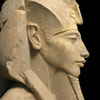
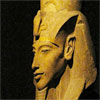
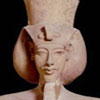
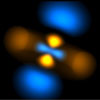
I’m not certain the place you are getting your info, however good topic.
I need to spend some time finding out more or working out more.
Thank you for wonderful info I was looking for this info for my mission.